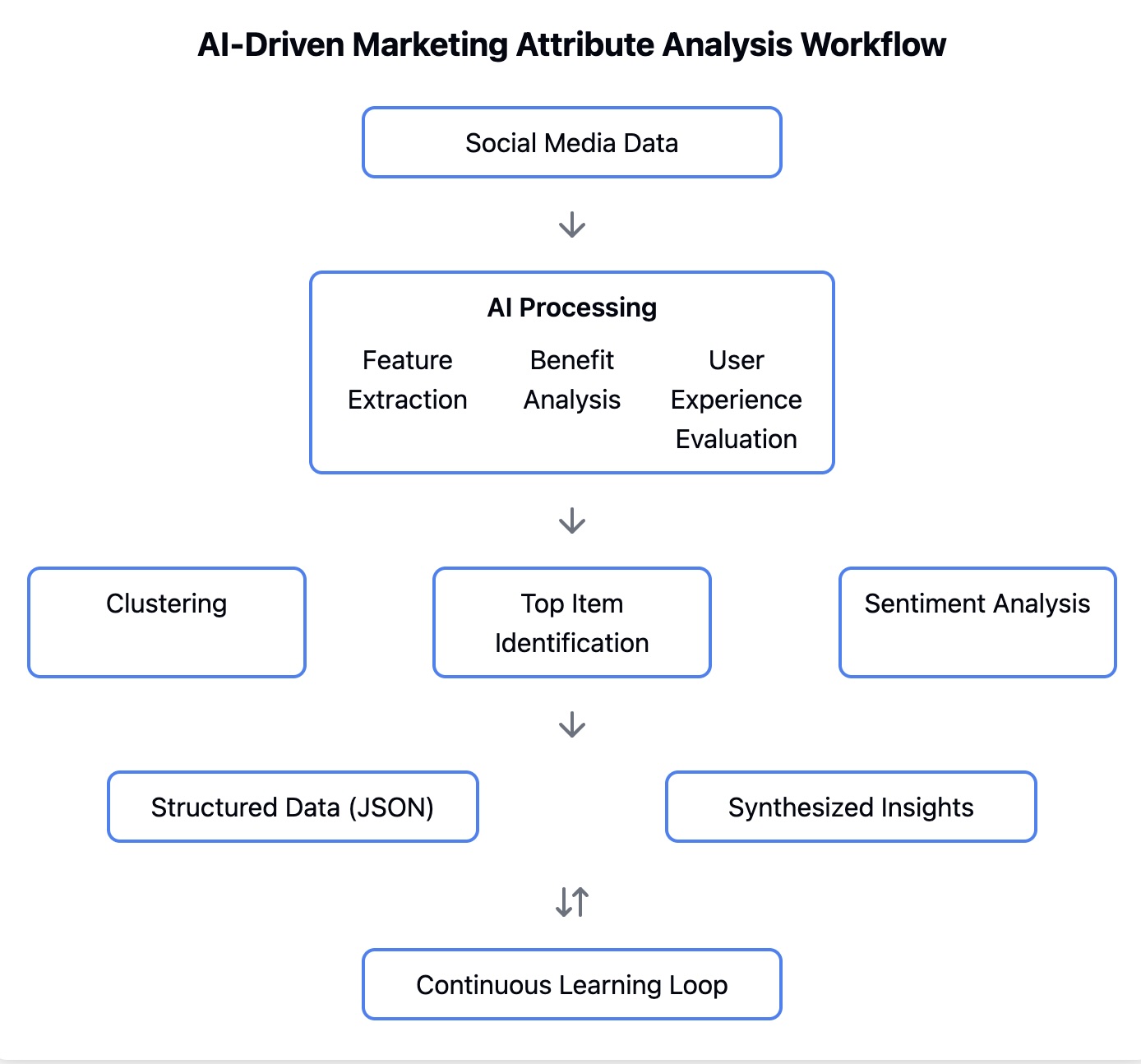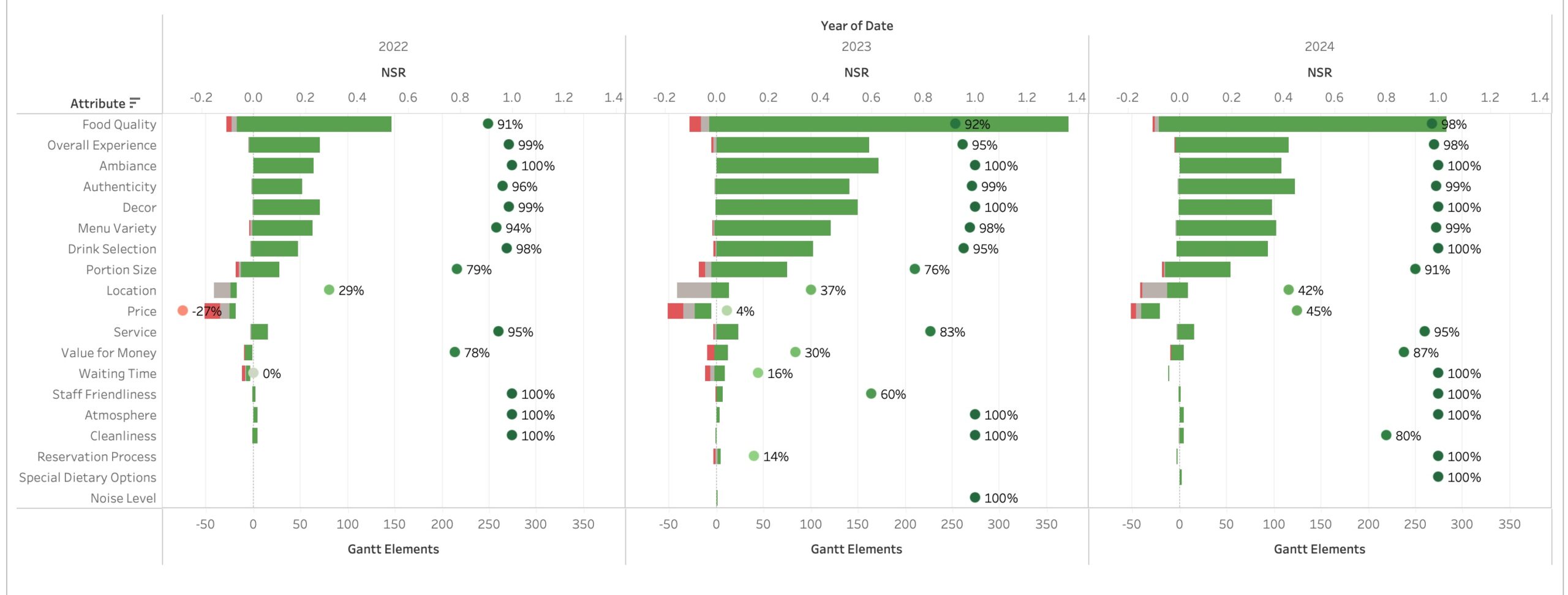Decoding Customer Preferences: Using Marketing Attributes to Beat the Competition

Thriving in today’s business world requires more than just sharp instincts – it demands a profound understanding of your customers. As consumers navigate through a sea of options, inundated by constant marketing messages, companies must evolve or risk fading into obscurity. The key to standing out in this crowded marketplace? Marketing attributes.
The Power of Marketing Attributes
Marketing attributes are the DNA of your product, service, or brand—the unique characteristics that set you apart from the competition. From tangible features to intangible associations, these attributes form the foundation of your value proposition. Mastering them doesn’t just help you survive; it positions you to flourish in the dynamic landscape of modern business.
By decoding which attributes resonate most with your target audience and learning to communicate them effectively, you can:
- Forge strong connections with customers
- Boost brand loyalty
- Increase conversion rates
- Expand your market share
This isn’t just about staying relevant—it’s about becoming a leader in your industry. For instance, when Apple introduced the iPhone, they didn’t just focus on its technical specifications. They emphasized attributes like intuitive design, seamless integration with other Apple products, and the prestige associated with owning an iPhone. These attributes helped Apple create a devoted customer base and dominate the smartphone market.
The Evolution of Marketing Attributes
Traditionally, marketing attributes were understood within a static framework, categorized as:
- Product Attributes: Tangible and functional characteristics (e.g., the processing power of a computer)
- Brand Attributes: Intangible qualities associated with a brand (e.g., luxury, reliability, innovation)
- Service Attributes: Aspects related to customer experience and support (e.g., 24/7 customer service)
- Price Attributes: Monetary cost and perceived value (e.g., premium pricing, value for money)
- Promotional Attributes: Characteristics of marketing communications (e.g., humor in advertising, celebrity endorsements)
Marketers would carefully craft messages around these attributes, hoping to align with customer preferences and gain a competitive edge. This approach, while valuable, was often limited by its static nature and reliance on predefined categories.
The AI Revolution in Understanding Marketing Attributes

Fig 1: AI marketing attribute analysis workflow: data input, processing, analysis, output, and continuous learning loop
The advent of artificial intelligence has transformed our approach to marketing attributes, offering unprecedented depth and dynamism:
- Dynamic Attribute Discovery: AI transcends traditional fixed categories by analyzing vast amounts of unstructured data from social media discussions, product reviews, and customer feedback. This process uncovers attributes that marketers might never have considered, revealing nuanced features, benefits, and user experiences that truly resonate with consumers. For example, an AI analysis of conversations about electric cars might reveal that customers value the quiet driving experience as much as the environmental benefits—an insight that could shape future product development and marketing strategies.
- Intelligent Attribute Clustering: By employing advanced clustering techniques, AI can group related attributes into meaningful categories. This allows for a more sophisticated understanding of how different attributes interact and relate to each other, providing marketers with a clearer picture of consumer preferences. For instance, an AI system might cluster attributes like “eco-friendly packaging,” “sustainable sourcing,” and “carbon-neutral shipping” under a broader category of “environmental responsibility,” helping brands to develop a cohesive green marketing strategy.
- Multi-Dimensional Analysis: The AI system simultaneously analyzes product features, benefits, and user experiences. This multi-faceted approach provides a comprehensive view of how consumers perceive and interact with products or services. For a smartphone, this might involve analyzing not just the technical specifications, but also how users feel about the phone’s aesthetics, its impact on their daily productivity, and even its role in their social status.
- Language-Agnostic Analysis: With its ability to process multiple languages, the AI system can analyze discussions and feedback across different linguistic markets, providing a global perspective on attribute preferences. This is particularly valuable for international brands looking to tailor their offerings and messaging to diverse cultural contexts.
- Scalable Data Processing: AI enables the analysis of much larger datasets than would be feasible with manual methods. This scalability ensures that insights are based on a broad and representative sample of consumer opinions, reducing the risk of bias and increasing the reliability of the findings.
Real-World Application: A Restaurant Chain Case Study
To illustrate the power of AI-driven analysis, let’s examine a case study using data from a restaurant chain. This analysis of social media discussions about the chain from 2022 to 2024 demonstrates how AI can uncover and categorize marketing attributes in ways that go beyond conventional methods.
Dynamic Attribute Discovery
The AI system revealed a multifaceted view of the establishment’s marketing attributes, uncovering a comprehensive set of 20 distinct attributes that shape the customer experience:
- Food Quality: The taste, presentation, and overall quality of the dishes served.
- Service: The efficiency, attentiveness, and professionalism of the staff.
- Ambiance: The overall atmosphere and mood of the restaurant.
- Price: The cost of dishes and whether it’s perceived as reasonable.
- Menu Variety: The range and diversity of dishes offered.
- Portion Size: The amount of food served per dish.
- Authenticity: How true the food is to traditional Taiwanese cuisine.
- Cleanliness: The hygiene standards of the restaurant.
- Location: The accessibility and surrounding area of the restaurant.
- Waiting Time: The duration customers wait to be seated or served.
- Reservation Process: The ease and efficiency of making a reservation.
- Staff Friendliness: The warmth and hospitality of the restaurant staff.
- Drink Selection: The variety and quality of beverages offered.
- Value for Money: The overall worth considering the price paid.
- Atmosphere: The general feel and vibe of the restaurant.
- Decor: The interior design and visual appeal of the restaurant.
- Noise Level: The volume and acoustics within the dining area.
- Special Dietary Options: Availability of vegetarian, vegan, or allergy-friendly options.
- Parking Availability: The ease of finding parking near the restaurant.
- Overall Experience: The holistic impression of the dining experience.
This comprehensive list demonstrates the power of AI in uncovering nuanced attributes that traditional market research might overlook. For instance, while a conventional survey might ask about “service” in general, our AI analysis distinguished between “service efficiency” and “staff friendliness,” providing a more detailed understanding of the customer experience.
Intelligent Attribute Clustering
Beyond identifying these attributes, our AI system grouped them into meaningful clusters, revealing patterns in customer perceptions:
- Core Dining Experience: Food Quality, Menu Variety, Portion Size, Authenticity, Drink Selection
- Service: Service Efficiency, Staff Friendliness, Waiting Time, Reservation Process
- Atmosphere: Ambiance, Decor, Noise Level, Cleanliness
- Value: Price, Value for Money
- Accessibility: Location, Parking Availability
- Inclusivity: Special Dietary Options

Fig. 2: Restaurant Attribute Clusters: Core Dining, Service, Atmosphere, Value, Accessibility, and Inclusivity with key attributes
These clusters provide insights into how different attributes work together to create the overall dining experience. For example, the distinction between “Ambiance” and “Atmosphere” in the same cluster suggests that customers perceive subtle differences in these related concepts.
Leveraging Insights for Strategy Development
Armed with these AI-generated insights, businesses can develop targeted strategies to enhance their competitive edge. Building upon the discovery of marketing attributes utilizing the transformative power of AI discussed above, the next step of our methodology involves applying a Multi-Attribute Analysis. This analysis provides a nuanced understanding of customer preferences and sentiment trends. The Likert chart below highlights key insights for strategic development:

Prioritizing Key Attributes
Based on the Net Sentiment Rating (NSR) data, attributes such as Food Quality, Overall Experience, and Ambience consistently receive high ratings. These should remain focal points in marketing and operational strategies. Emphasizing these strengths in promotional materials and customer interactions can reinforce positive perceptions and attract new customers.
For example, the restaurant chain could create a marketing campaign highlighting their commitment to food quality, showcasing their sourcing of fresh, local ingredients and featuring testimonials from satisfied customers about their overall dining experience.
Addressing Areas of Improvement
Attributes like Price and Location have shown lower sentiment scores, indicating areas for potential improvement. Strategies could include:
- Price Adjustments: Consider revisiting pricing strategies to ensure they align with perceived value. Implementing targeted promotions or loyalty programs can also enhance perceived value for money. For instance, the restaurant could introduce a tiered loyalty program that offers increasing discounts or exclusive menu items to frequent diners.
- Location Enhancements: If feasible, improving accessibility or offering transportation incentives might mitigate location-related concerns. This could involve partnering with ride-sharing services to offer discounted rides to the restaurant or improving signage and visibility to make the location easier to find.
Enhancing Customer Experience
Attributes such as Service and Waiting Time have shown fluctuating sentiment scores. To enhance customer satisfaction:
- Service Training: Invest in staff training programs focusing on efficiency and friendliness to improve service quality. This could involve role-playing exercises to help staff handle various customer scenarios or implementing a mentorship program where experienced staff guide newer employees.
- Streamlining Processes: Implement technology solutions to reduce waiting times, such as online reservations or mobile ordering systems. The restaurant could develop a custom app that allows customers to view real-time wait times, join a virtual queue, or pre-order their meals to minimize waiting time upon arrival.
Strategic Marketing Communication
Given the mild growth in social media engagement from 2022 to 2024, integrating insights into marketing strategies becomes even more crucial:
- Targeted Messaging: Develop marketing messages that not only highlight strengths in food quality and overall experience but also directly address areas needing improvement. This approach can help maintain customer interest and drive engagement. For example, if the AI analysis reveals that customers appreciate the restaurant’s efforts to improve its service speed, the marketing team could create content showcasing these improvements and inviting customer feedback.
- Enhanced Engagement Campaigns: Create campaigns that leverage storytelling to showcase the restaurant’s unique attributes and improvements over time. By focusing on authentic narratives, these campaigns can foster deeper connections with the audience and encourage more active participation on social media platforms. This could involve featuring behind-the-scenes content of chefs preparing signature dishes or sharing customer stories about memorable dining experiences at the restaurant.
Conclusion: Embracing the Marketing Attributes Revolution
Customer preferences shift rapidly, the ability to understand and leverage marketing attributes is no longer a luxury—it’s a necessity. By harnessing the power of AI to decode these attributes, businesses can:
- Create lasting connections with their customers by truly understanding their needs and preferences
- Outmaneuver competitors with data-driven strategies that respond to real-time market changes
- Drive sustainable growth through targeted improvements based on concrete customer insights
- Adapt quickly to changing market conditions by continuously monitoring and analyzing attribute trends
The future belongs to those who can not only listen to their customers but truly understand them. As you embark on this journey of discovery, remember that every interaction, every piece of feedback, and every data point is an opportunity to refine your understanding of what makes your brand unique in the eyes of your customers.
Are you ready to decode your marketing attributes and revolutionize your approach to customer engagement? The competitive edge you’ve been seeking might just be hidden in the data you already have. It’s time to unlock its potential and transform your business strategy for the AI-driven future of marketing. Don’t just compete—lead the market by truly understanding and delivering what your customers value most. By embracing the power of AI-driven marketing attribute analysis, you’re not just keeping pace with the competition—you’re setting the pace. The insights you gain will not only inform your current strategies but will also shape the future of your brand. In a world where customer expectations are constantly evolving, your ability to adapt and respond to these changes will be your greatest asset.
So, take the leap. Invest in AI-powered marketing attribute analysis. Let it guide your product development, shape your customer experience, and drive your marketing strategies. The road to market leadership is paved with deep customer insights—and AI is your vehicle to get there faster and more efficiently than ever before.
The question isn’t whether you can afford to embrace this revolution in marketing attributes. In today’s hyper-competitive business environment, the real question is: Can you afford not to?
